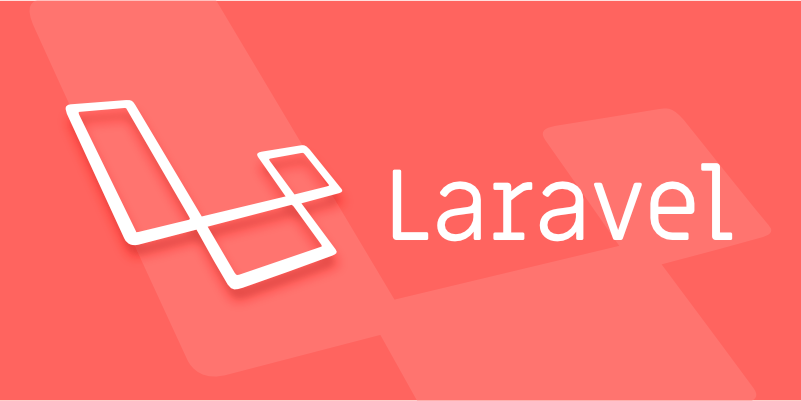Install required server software including Nginx, PHP 8.1 , Composer, and database; 2. Upload Laravel app via Git or SFTP and run composer install --optimize-autoloader --no-dev; 3. Configure .env with production settings, generate app key, and set proper permissions using chown and chmod; 4. Point Nginx to public directory with correct server block and reload configuration; 5. Run php artisan migrate --force and cache config, route, and view files; 6. Set up queue workers with Supervisor and schedule cron job for php artisan schedule:run; always disable APP_DEBUG, use caching, monitor logs, and back up databases to ensure a secure, optimized production environment.

Deploying a Laravel application to a server involves several key steps to ensure your app runs smoothly in a production environment. Here’s a practical guide to help you get it done right.

1. Prepare Your Server Environment
Before uploading your Laravel app, make sure your server has the required software installed:
- Web Server: Apache or Nginx (Nginx is recommended for Laravel)
- PHP: Version 8.1 or higher (check Laravel’s version requirements)
- Database: MySQL, PostgreSQL, or SQLite
- Composer: For installing PHP dependencies
- Git (optional, but helpful for deployment)
- SSL/TLS (via Let’s Encrypt, for HTTPS)
For example, on Ubuntu with Nginx:

sudo apt update sudo apt install nginx php-fpm php-mysql php-curl php-mbstring php-xml php-zip composer
Also, ensure mod_rewrite is enabled if using Apache.
2. Upload Your Laravel Application
There are a few ways to get your code on the server:

Git clone (recommended for production):
git clone your-repo-url.git /var/www/your-site
SFTP/SCP: Upload files directly from your local machine.
Once files are on the server, go to your app’s root directory and install dependencies:
composer install --optimize-autoloader --no-dev
The --no-dev flag skips development packages, which improves performance and security.
3. Configure Environment & Permissions
Laravel uses a .env file for environment-specific settings.
Copy
.env.exampleto.env:cp .env.example .env
Edit
.envwith your production settings:APP_ENV=production APP_DEBUG=false APP_URL=https://yourdomain.com DB_DATABASE=your_db_name DB_USERNAME=your_db_user DB_PASSWORD=your_db_password
Generate the application key:
php artisan key:generate
Set proper file permissions:
sudo chown -R www-data:www-data /var/www/your-site sudo chmod -R 755 storage bootstrap/cache
4. Set Up the Web Server (Nginx Example)
Point your web server to Laravel’s public directory.
Create an Nginx config file:
server {
listen 80;
server_name yourdomain.com;
root /var/www/your-site/public;
index index.php index.html;
location / {
try_files $uri $uri/ /index.php?$query_string;
}
location ~ \.php$ {
fastcgi_pass unix:/var/run/php/php8.1-fpm.sock;
fastcgi_index index.php;
fastcgi_param SCRIPT_FILENAME $realpath_root$fastcgi_script_name;
include fastcgi_params;
}
}Enable the site and reload Nginx:
sudo ln -s /etc/nginx/sites-available/your-site /etc/nginx/sites-enabled/ sudo nginx -t && sudo systemctl reload nginx
5. Run Migrations and Optimize
Run your database migrations:
php artisan migrate --force
The --force flag is needed in production to prevent accidental prompts.
Optimize the app for performance:
php artisan config:cache php artisan route:cache php artisan view:cache
Avoid running storage:link if you’re not using symbolic links for uploads.
6. Set Up Queue Workers and Scheduler (Optional)
If your app uses queues (e.g., with Redis or database driver), run a queue worker:
php artisan queue:work --daemon
Use Supervisor to keep it running:
[program:laravel-worker] command=php /var/www/your-site/artisan queue:work --sleep=3 --tries=3 user=www-data autostart=true autorestart=true
For scheduled tasks, add this to your crontab:
* * * * * cd /var/www/your-site && php artisan schedule:run >> /dev/null 2>&1
Final Notes
- Always set
APP_DEBUG=falsein production. - Use a CDN and caching (Redis, Memcached) for better performance.
- Monitor logs:
storage/logs/laravel.log - Back up your database regularly.
Basically, it’s about getting the code on the server, setting the right config, securing the environment, and optimizing for production. Not complicated, but easy to miss a step.
The above is the detailed content of How to deploy a Laravel application to a server?. For more information, please follow other related articles on the PHP Chinese website!

Hot AI Tools

Undress AI Tool
Undress images for free

Undresser.AI Undress
AI-powered app for creating realistic nude photos

AI Clothes Remover
Online AI tool for removing clothes from photos.

Clothoff.io
AI clothes remover

Video Face Swap
Swap faces in any video effortlessly with our completely free AI face swap tool!

Hot Article

Hot Tools

Notepad++7.3.1
Easy-to-use and free code editor

SublimeText3 Chinese version
Chinese version, very easy to use

Zend Studio 13.0.1
Powerful PHP integrated development environment

Dreamweaver CS6
Visual web development tools

SublimeText3 Mac version
God-level code editing software (SublimeText3)

Hot Topics
 Creating Custom Validation Rules in a Laravel Project
Jul 04, 2025 am 01:03 AM
Creating Custom Validation Rules in a Laravel Project
Jul 04, 2025 am 01:03 AM
There are three ways to add custom validation rules in Laravel: using closures, Rule classes, and form requests. 1. Use closures to be suitable for lightweight verification, such as preventing the user name "admin"; 2. Create Rule classes (such as ValidUsernameRule) to make complex logic clearer and maintainable; 3. Integrate multiple rules in form requests and centrally manage verification logic. At the same time, you can set prompts through custom messages methods or incoming error message arrays to improve flexibility and maintainability.
 Working with pivot tables in Laravel Many-to-Many relationships
Jul 07, 2025 am 01:06 AM
Working with pivot tables in Laravel Many-to-Many relationships
Jul 07, 2025 am 01:06 AM
ToworkeffectivelywithpivottablesinLaravel,firstaccesspivotdatausingwithPivot()orwithTimestamps(),thenupdateentrieswithupdateExistingPivot(),managerelationshipsviadetach()andsync(),andusecustompivotmodelswhenneeded.1.UsewithPivot()toincludespecificcol
 Sending different types of notifications with Laravel
Jul 06, 2025 am 12:52 AM
Sending different types of notifications with Laravel
Jul 06, 2025 am 12:52 AM
Laravelprovidesacleanandflexiblewaytosendnotificationsviamultiplechannelslikeemail,SMS,in-appalerts,andpushnotifications.Youdefinenotificationchannelsinthevia()methodofanotificationclass,andimplementspecificmethodsliketoMail(),toDatabase(),ortoVonage
 Understanding Dependency Injection in Laravel?
Jul 05, 2025 am 02:01 AM
Understanding Dependency Injection in Laravel?
Jul 05, 2025 am 02:01 AM
Dependency injection automatically handles class dependencies through service containers in Laravel without manual new objects. Its core is constructor injection and method injection, such as automatically passing in the Request instance in the controller. Laravel parses dependencies through type prompts and recursively creates the required objects. The binding interface and implementation can be used by the service provider to use the bind method, or singleton to bind a singleton. When using it, you need to ensure type prompts, avoid constructor complications, use context bindings with caution, and understand automatic parsing rules. Mastering these can improve code flexibility and maintenance.
 Strategies for optimizing Laravel application performance
Jul 09, 2025 am 03:00 AM
Strategies for optimizing Laravel application performance
Jul 09, 2025 am 03:00 AM
Laravel performance optimization can improve application efficiency through four core directions. 1. Use the cache mechanism to reduce duplicate queries, store infrequently changing data through Cache::remember() and other methods to reduce database access frequency; 2. Optimize database from the model to query statements, avoid N 1 queries, specifying field queries, adding indexes, paging processing and reading and writing separation, and reduce bottlenecks; 3. Use time-consuming operations such as email sending and file exporting to queue asynchronous processing, use Supervisor to manage workers and set up retry mechanisms; 4. Use middleware and service providers reasonably to avoid complex logic and unnecessary initialization code, and delay loading of services to improve startup efficiency.
 Managing database state for testing in Laravel
Jul 13, 2025 am 03:08 AM
Managing database state for testing in Laravel
Jul 13, 2025 am 03:08 AM
Methods to manage database state in Laravel tests include using RefreshDatabase, selective seeding of data, careful use of transactions, and manual cleaning if necessary. 1. Use RefreshDatabasetrait to automatically migrate the database structure to ensure that each test is based on a clean database; 2. Use specific seeds to fill the necessary data and generate dynamic data in combination with the model factory; 3. Use DatabaseTransactionstrait to roll back the test changes, but pay attention to its limitations; 4. Manually truncate the table or reseed the database when it cannot be automatically cleaned. These methods are flexibly selected according to the type of test and environment to ensure the reliability and efficiency of the test.
 Choosing between Laravel Sanctum and Passport for API authentication
Jul 14, 2025 am 02:35 AM
Choosing between Laravel Sanctum and Passport for API authentication
Jul 14, 2025 am 02:35 AM
LaravelSanctum is suitable for simple, lightweight API certifications such as SPA or mobile applications, while Passport is suitable for scenarios where full OAuth2 functionality is required. 1. Sanctum provides token-based authentication, suitable for first-party clients; 2. Passport supports complex processes such as authorization codes and client credentials, suitable for third-party developers to access; 3. Sanctum installation and configuration are simpler and maintenance costs are low; 4. Passport functions are comprehensive but configuration is complex, suitable for platforms that require fine permission control. When selecting, you should determine whether the OAuth2 feature is required based on the project requirements.
 Implementing Database Transactions in Laravel?
Jul 08, 2025 am 01:02 AM
Implementing Database Transactions in Laravel?
Jul 08, 2025 am 01:02 AM
Laravel simplifies database transaction processing with built-in support. 1. Use the DB::transaction() method to automatically commit or rollback operations to ensure data integrity; 2. Support nested transactions and implement them through savepoints, but it is usually recommended to use a single transaction wrapper to avoid complexity; 3. Provide manual control methods such as beginTransaction(), commit() and rollBack(), suitable for scenarios that require more flexible processing; 4. Best practices include keeping transactions short, only using them when necessary, testing failures, and recording rollback information. Rationally choosing transaction management methods can help improve application reliability and performance.






